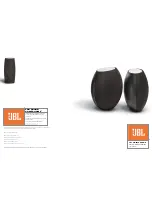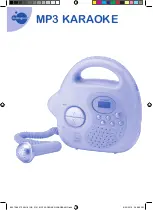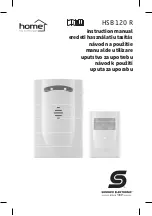
16
FCC COMPLIANCE STATEMENT
FCC COMPLIANCE STATEMENT
FCC COMPLIANCE STATEMENT
FCC COMPLIANCE STATEMENT
FCC COMPLIANCE STATEMENT
CAUTION: Changes or modifications not expressly approved by
CAUTION: Changes or modifications not expressly approved by
CAUTION: Changes or modifications not expressly approved by
CAUTION: Changes or modifications not expressly approved by
CAUTION: Changes or modifications not expressly approved by
Digital Security Controls Ltd. could void your authority to use this
Digital Security Controls Ltd. could void your authority to use this
Digital Security Controls Ltd. could void your authority to use this
Digital Security Controls Ltd. could void your authority to use this
Digital Security Controls Ltd. could void your authority to use this
equipment.
equipment.
equipment.
equipment.
equipment.
This equipment has been tested and found to comply with the limits for
a Class B digital device, pursuant to Part 15 of the FCC Rules. These limits
are designed to provide reasonable protection against harmful interfer-
ence in a residential installation. This equipment generates, uses and can
radiate radio frequency energy and, if not installed and used in
accordance with the instructions, may cause harmful interference to radio
communications. However, there is no guarantee that interference will
not occur in a particular installation. If this equipment does cause harmful
interference to radio or television reception, which can be deter-mined
by turning the equipment off and on, the user is encouraged to try to
correct the interference by one or more of the following measures:
• Re-orient the receiving antenna.
• Increase the separation between the equipment and receiver.
• Connect the equipment into an outlet on a circuit different from that
to which the receiver is connected.
• Consult the dealer or an experienced radio/television technician for
help.
The user may find the following booklet prepared by the FCC useful: "How
to Identify and Resolve Radio/Television Interference Problems". This
booklet is available from the U.S. Government Printing Office, Washington
D.C. 20402, Stock # 004-000-00345-4.
IMPORTANT INFORMATION
IMPORTANT INFORMATION
IMPORTANT INFORMATION
IMPORTANT INFORMATION
IMPORTANT INFORMATION
This equipment complies with Part 68 of the FCC Rules and the
requirements adopted by the ACTA. On the side of this equipment is a
label that contains, among other information, a product identifier in the
format US:AAAEQ##TXXXX. If requested, this number must be provided
to the Telephone Company.
Product identifier: US: F53AL01BPC580
USOC Jack: RJ-31X
Telephone Connection Requirements
Telephone Connection Requirements
Telephone Connection Requirements
Telephone Connection Requirements
Telephone Connection Requirements
A plug and jack used to connect this equipment to the premises wiring
and telephone network must comply with the applicable FCC Part 68 rules
and requirements adopted by the ACTA. A compliant telephone cord and
modular plug is provided with this product. It is designed to be connected
to a compatible modular jack that is also compliant. See installation
instructions for details.
Ringer Equivalence Number (REN)
Ringer Equivalence Number (REN)
Ringer Equivalence Number (REN)
Ringer Equivalence Number (REN)
Ringer Equivalence Number (REN)
The REN is used to determine the number of devices that may be
connected to a telephone line. Excessive RENs on a telephone line may
result in the devices not ringing in response to an incoming call. In most
but not all areas, the sum of RENs should not exceed five (5.0). To be
certain of the number of devices that may be connected to a line, as
determined by the total RENs, contact the local Telephone Company. For
products approved after July 23, 2001, the REN for this product is part
of the product identifier that has the format
US: AAAEQ##TXXXX. The digits represented by ## are the REN without
a decimal point (e.g., 03 is a REN of 0.3). For earlier products, the REN
is separately shown on the label.
Incidence of Harm
Incidence of Harm
Incidence of Harm
Incidence of Harm
Incidence of Harm
If this equipment PC585 causes harm to the telephone network, the
telephone company will notify you in advance that temporary
discontinuance of service may be required. But if advance notice is not
practical, the Telephone Company will notify the customer as soon as
possible. Also, you will be advised of your right to file a complaint with
the FCC if you believe it is necessary.
Changes in Telephone Company Equipment or Facilities
Changes in Telephone Company Equipment or Facilities
Changes in Telephone Company Equipment or Facilities
Changes in Telephone Company Equipment or Facilities
Changes in Telephone Company Equipment or Facilities
The Telephone Company may make changes in its facilities, equipment,
operations or procedures that could affect the operation of the equipment.
If this happens the Telephone Company will provide advance notice in
order for you to make necessary modifications to maintain uninterrupted
service.
Equipment Maintenance Facility
Equipment Maintenance Facility
Equipment Maintenance Facility
Equipment Maintenance Facility
Equipment Maintenance Facility
If trouble is experienced with this equipment PC585, for repair or warranty
information, please contact the facility indicated below. If the equipment
is causing harm to the telephone network, the Telephone Company may
request that you disconnect the equipment until the problem is solved. This
equipment is of a type that is not intended to be repaired by the end user.
Simplex Time Recorder Co. 100 Simplex Drive, Westminster MA 01441-
0001 USA, Tel: (978) 731-2500
Additional Information
Additional Information
Additional Information
Additional Information
Additional Information
Connection to party line service is subject to state tariffs. Contact the
state public utility commission, public service commission or corporation
commission for information.
Alarm dialing equipment must be able to seize the telephone line and place
a call in an emergency situation. It must be able to do this even if other
equipment (telephone, answering system, computer modem, etc.) already
has the telephone line in use. To do so, alarm dialing equipment must be
connected to a properly installed RJ-31X jack that is electrically in series
with and ahead of all other equipment attached to the same telephone line.
Proper installation is depicted in the figure below. If you have any questions
concerning these instructions, you should consult your telephone company
or a qualified installer about installing the RJ-31X jack and alarm dialing
equipment for you.
Telephone
Computer
Telephone
Telephone
Fax Machine
Alarm Dialing
Equipment
RJ-31X
Jack
Unused
RJ-11 Jack
Telephone
Line
Network
Service
Provider's
Facilities
Customer Premises Equipment and Wiring
Unused
RJ-11 Jack
Network
Demarcation
Point
Answering
System
1
About Your Security System
Your DSC security equipment has been designed to provide you with the greatest possible flexibility
and convenience. Read this manual carefully and have your installer instruct you on your system’s
operation and on which features have been implemented in your system. All users of this system
should be equally instructed in its use. Fill out the “System Information” page with all of your zone
information and access codes and store this manual in a safe place for future reference.
Fire Detection
This equipment is capable of monitoring fire detection devices such as smoke detectors and providing
a warning if a fire condition is detected. Good fire detection depends on having adequate number of
detectors placed in appropriate locations. This equipment should be installed in accordance with
N.F.P.A. standard #72. (N.F.P.A., Batterymarch Park, Quincey MA 02269). Carefully review the Family
Escape Planning guidelines in this manual.
NOTE: Your installer must enable the fire detection portion of this equipment before it will work.
Testing
To insure that your system continues to work as intended, you must test your system weekly. Please
refer to “Testing Your System” on page 13 of this manual. If your system does not work properly, call
your installing company for service.
Monitoring
This system is capable of sending alarms, troubles and emergency information over telephone lines to
a monitoring station. If you inadvertently initiate an alarm, immediately call the monitoring station to
prevent an unnecessary response.
NOTE: Your installer must enable the monitoring feature before it will work.
General System Operation
Your security system is made up of a DSC control panel, one or more keypads and various sensors
and detectors. The control panel will be mounted out of the way in a utility closet or in a basement. The
metal cabinet contains the system electronics, fuses and stand-by battery. There is normally no reason
for anyone but the installer or service professional to have access to the control panel.
All the keypads have an audible indicator and command entry keys. The LED keypads have a group
of zone and system status lights. The LCD keypad has an alphanumeric liquid crystal display (LCD).
The keypad is used to send commands to the system and to display the current system status. The
keypad(s) will be mounted in a convenient location inside the protected premises close to the entry/
exit door(s).
The security system has several protected areas (zones) and each of these will be connected to one
or more sensors (motion detectors, glassbreak detectors, door contacts, etc.). A sensor in alarm will
be indicated by the corresponding zone lights flashing on an LED keypad or by a fixed message on
the LCD keypad.
IMPORTANT NOTICE
A security system cannot prevent emergencies. It is only intended to alert you and – if included –
your monitoring station of an emergency situation. Security systems are generally very reliable
but they may not work under all conditions and they are not a substitute for prudent security
practices or life and property insurance. Your security system should be installed and serviced by
qualified security professionals who should instruct you on the level of protection that has been
provided and on system operations.




























